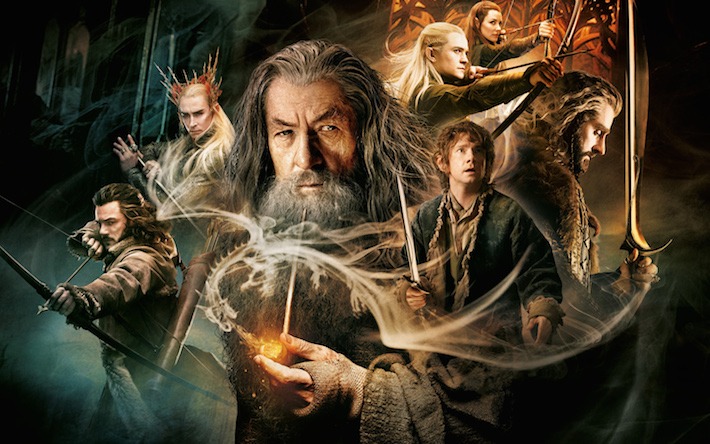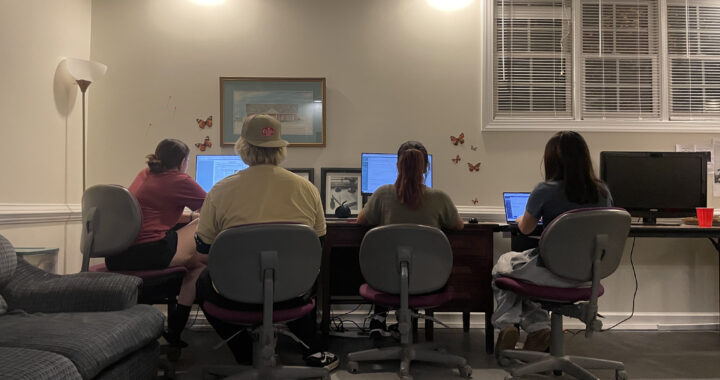Peter Jackson’s “Battle of Five Armies” disappoints some fans
4 min read
Flickr/ Screen Relish
By COLEMAN HOPKINS
Over the past fourteen years Peter Jackson delivered non-stop box office successes about Middle Earth. Since his first movie, “The Fellowship of The Ring” in 2001, Jackson has done “Lord of the Rings” author J.R.R Tolkien justice while also making immensely popular and profitable films.
However, the final installment of The Hobbit Trilogy left much to be desired and reflected the Hollywood-warped aspect of the film, which Jackson promised to avoid.
Although Jackson wrote the Hobbit’s third film, “The Battle of Five Armies,” largely by himself, the liberties he took with the film made it hard to attach Tolkien’s name to it.
For example, “The Lord of the Rings” movies built their reputation on relatable, well-written characters who may have been elves or wizards but who also have a distinctly human side, which the audience could see and understand.
Unfortunately, “The Battle of Five Armies” did not have that. Moreover, many of the characters were created through Computer Generated Imagery rather than be played by live actors, which made the characters very hard to empathize with or relate to. CGI is meant to enhance a film’s action sequences, but for “The Hobbit,” the graphics made it extremely challenging as a viewer to keep track of the film’s direction.
Jackson is famous for going against contemporary Hollywood trends, which as of late include shorter movies and more action. Perhaps one of the most distressing elements to “The Battle of Five Armies” was to see Jackson conform on his last Middle Earth movie.
The film was cut-down and made much shorter than any of his other five Tolkien films, yet if there were any film to expand on, it would have been the final.
“The Return of The King,” the final chapter of “The Lord of the Rings” trilogy, had roughly thirty minutes at the end of the film devoted to tying up loose ends. By contrast, “The Battle of Five Armies” tried to finish everything off instead of concluding it. This is as anti-Tolkien as it is anti-Jackson, so why did the director choose to make the film this way?
It very likely had something to do with all of the criticism that Jackson faced after the prior two installments were ripped for being “too long.” While it is important to respond to criticism from those in your industry, it is also important to remember that the story itself has to be considered when making such an impactful decision on the story’s conclusion. It is also very unlikely that the hardcore fans would have disliked additional footage, but that could just be me.
Another issue that I had with “The Hobbit” overall, was the insinuation that everybody knew that Sauron, the main antagonist of the “The Lord of the Rings,” which is set after “The Hobbit,” was returning. This is the big flaw for me, as it makes the entire plot of The Hobbit indefensible.
One cannot write “The Hobbit” in such a way that it looks like the events of “The Lord of the Rings” unfolded out of ignorance or laziness as opposed to the rapid ascent of evil. The idea that Middle Earth was aware of Sauron’s return, the ring and the rise of evil takes away from the motif of “The Lord of the Rings:” that good people act heroically.
In the beginning of “The Lord of the Rings,” there are constant references to the unrest in Mordor, the lair of Sauron, as well as suggestions that something is amiss. Yet “The Hobbit” seems to imply that everybody knew exactly what was going on and did not care.
This was the hardest parts to deal with as a viewer, and I still cannot understand how Jackson managed to screw it up, but he did. Furthermore, by leaving the story where it was, some sixty years before the start of “The Lord of the Rings,” he only exacerbated the problem of laziness in spite of the ability to save the world.
While this did allow Jackson to add in some additional parts into “The Hobbit,” I do not believe that the liberties he took with the plot were worth the extra fighting scenes.
These scenes were another tricky issue for Jackson in this film. All of Jackson’s adaptations of Tolkien’s works have featured well-choreographed and realistic battles, oftentimes with the inclusion of a few goofy lines or scenes. However, “The Battle of Five Armies” overdid the fighting in general.
For example, the final battle between Azog and Thorin lasted so long that it became boring, it was genuinely hard to stay invested in a more than ten-minute fight between a dwarf and a CGI orc.
Once again, I believe that Jackson had good intentions, but the execution left much to be desired, and effectively took away from the film and the story. While “The Lord of the Rings” trilogy began and ended with a bang, “The Hobbit” series started with much promise only to end with a mediocre pop.
To be clear, Jackson got so many things right over the past fourteen years that he has worked on bringing Tolkien’s writings to the screen, that it is hard to fault him too much, but I do wish that he had left myself and other fans with a more fitting end to such a great story.











